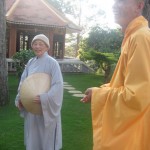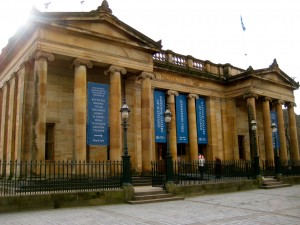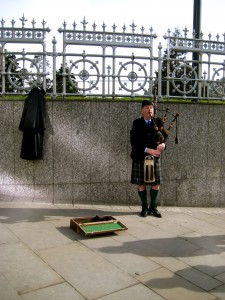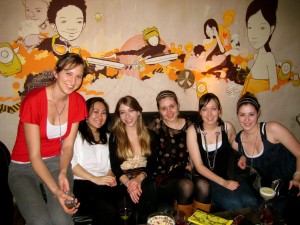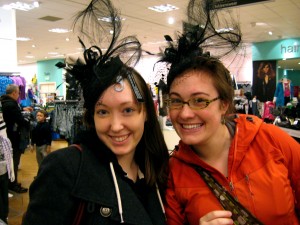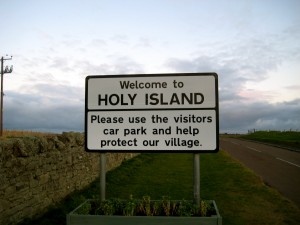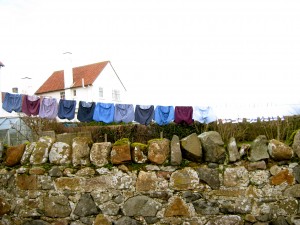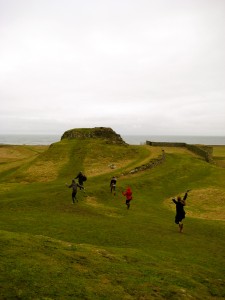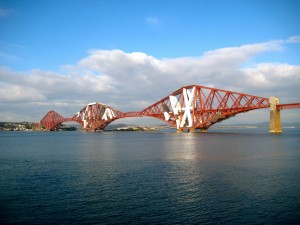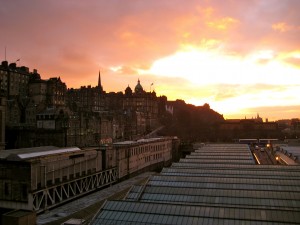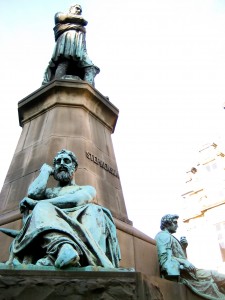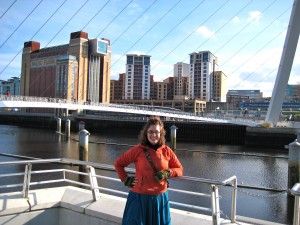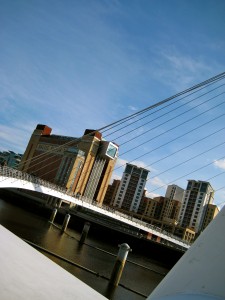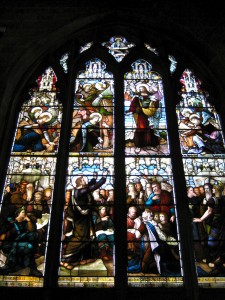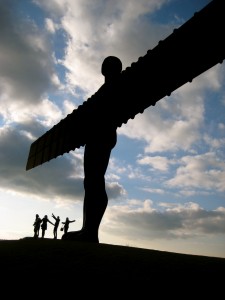Dear Cádiz,
Thank you for your time. I appreciated your brief spurts of sun, and your striking coastline. However, I must tell you that you treated me with little respect and in fact I would go so far as to say that you chewed me up and spit me out a little fatter (french fries and churros were the only things on your menu), a little wetter (can anyone say ¨monsoon¨?), a little more tired, but a lot more experienced in the craziness that is Carnival.
Last weekend I went to Cádiz, a southern port town in Spain with an enormous enthusiasm for Carnival. Before I left I bought a flashy looking skirt made out of metallic streamers as my (I´ll admit) very lame excuse for a costume. I closely resembled an unwound maypole, if you can imagine that. I figured this would suffice for the occasion, never having been to a Carvnival celebration before and hoping that I wouldn´t stick out like a chicken in a pig-pen. Unfortunately when I saw the crowd it was clear that I seriously underestimated the importance of a costume. Amidst the many Carnival-goers, there were people dressed as cows, ninja turtles, fairies, Obama, fire-fighters, princesses, and even Waldos (which were quite easy to find, by the way). The streets were so full that we had to move in clever zig-zag patterns between the drunk penguins and the dancing flamingos. We all walked like one giant ant colony, tickling and annoying the feet of the buildings that towered above us.
Our bus arrived at 6:00 p.m., and was to pick us up at 3:00 a.m. to take us back to our hostel. Most of my friends were being picked up at 6:00 a.m. and going straight back to Granada. At first I was a little disappointed in myself, and i wished that I had bought the 6:00 a.m. ticket instead and not bothered to get a hostel. Apparently I thought nine hours of Carnival just wasn´t enough…I wanted twelve, gosh dang it!
The party commenced, the bands began to play, and I was wistfully making my way through the streets, holding the hand of my roommate as I dragged her through the crowd behind me. We stopped and talked to countless people, none of whom were actually from Cádiz. People had come from all over the world, and I kept imagining rivers running down through Spain and all dumping into the same place: a pool of ridiculous costumes, partying, and the most amazing churros on the planet. (Honestly, these churros were thick and doughy and had CHOCOLATE inside!)
I talked to a group of Spaniards who were all dressed up as ¨American football¨ players. When I told them I was actually from America, they were really excited and asked me to name some teams. They had never heard of a single American Football team, even though they had ¨New York¨painted on their jerseys. I told them they were probably The Giants, but they could also pass as the Jets. They asked me to scream their new-found team name into their megaphone but instead I screamed ¨Go Chargers!¨, because I´m from San Diego and I simply couldn´t resist.
Around midnight, the rain made its first appearence. Like little letters of warning, small, intermittent droplets began to fall. Lightning shook the sky, and exposed the deep purple clouds that had formed above the sea like an army at bay, waiting to attack. And when it struck, it struck to kill. Half past midnight, the sky rounded up it´s troops and showered us with the most torrential downpour that city had ever seen. ( I actually don´t know if that last part is true, but it´s very likely). We took cover under the old archways that were stationed around the city but there simply wasn´t enough space for the thousands of victims who were being pelted with bullets of rain.
Now it´s about 1:00, and I have another two hours before my bus leaves. I am soaking wet, and no longer resemble a maypole in the slightest, but rather a wet raccoon who got stuck in an odd looking ripped lamp shade while digging through a trash can. My make-up looked like I took a Sharpie to the the rims of my eyes, and my ¨skirt¨ was plastered to my jeans. Mary (my roommate) and I had the brilliant idea to take refuge in Burger King for the next two hours until we could get on our bus. I sat at the table a defeated, cold, wet raccoon in a lamp shade. Now I must say, THAT is a good costume.
By 2:00 Mary and I couldn´t stand it any longer and we decided to see if we could board the bus early, and just sit on it until it left. The bus station was at least a twenty-five minute walk away, and when we arrived it looked as though we had swum there. Regardless, we made it, the bus was there, and we were able to sit sheltered from the storm. While we had all complained about how early the bus was picking us up, there was not a single person who didn´t board it at least fifteen minutes before it left. Most had been there over an hour. I could not have been happier that I had a hostel to return to, and that I didn´t have to spend another three unbearable hours at Carnival. My friends who left at six said it ranked in the top five worst nights of their lives (a little dramatic, I know but we´ll let them have their moment) but for me, I actually have some good memories. Up until the attack of the rain, I enjoyed taking in the ridiculousness, and even during the first part of the storm I welcomed the shower with arms reaching for the sky, opening my mouth to let the refreshing rain spill in. After about eight seconds of that, however, I was done. And it was very comforting to know that I had a bed to go back to.
The next day, Sunday, the sun made it´s debut and I spent the entire day sitting on the seawall, watching the violent waves recover from last night´s storm. Having grown up in a beach town, I´ve missed the ocean tremendously since I left (I saw it briefly in Barcelona). It was therapuetic to watch the crumbling waves charge the shoreline. In San Diego, the waves are relatively well behaved, and break in lines, one after the other. In Cádiz, the waves have a mind of their own. Some chose to break several hundred feet out, while others broke right when they hit the rocks, while some collided with each other, wille a whirlpool formed in the midst of the chaos. In a way, these waves reminded me of the night before. People collided, people danced in circles, some stood on the outside to watch the craziness, but essentially we were all there. Together. We combined to form an ocean of celebratory ridiculousness, and it didn´t matter where we came from, we ended up in the same place, for the same reasons. That´s why I truly enjoyed Carnival. It was an event of coming together.

